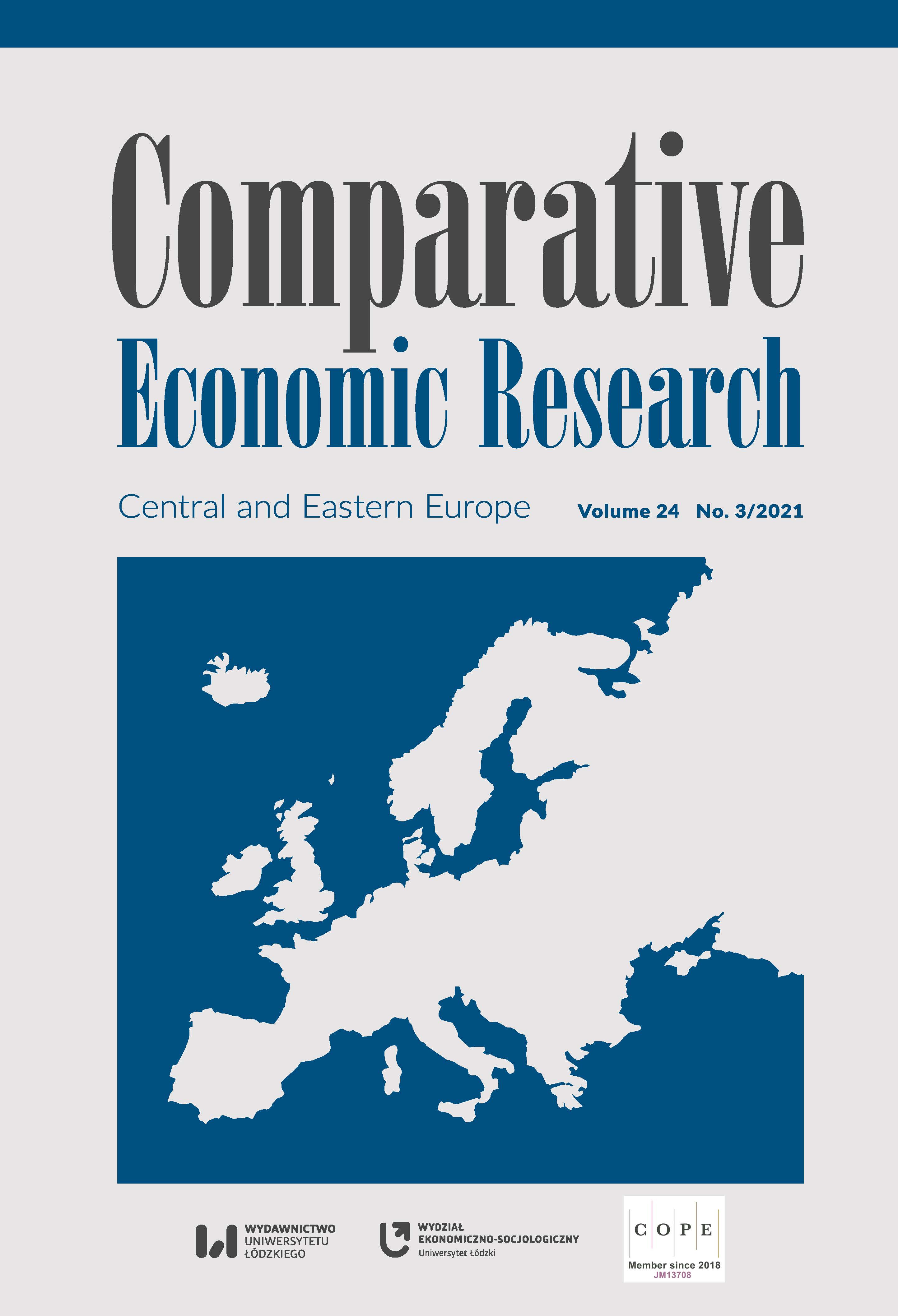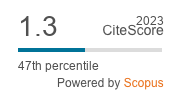Analyzing and Strategizing the Development of Entrepreneurial Activity Based on the Principles of Increasing Productivity (Illustrated by the Example of Developed Countries and Ukraine)
DOI:
https://doi.org/10.18778/1508-2008.24.24Keywords:
productivity of entrepreneurial activity, deindustrialization, strategy, value-added maximizationAbstract
The article presents the results of a comparative analysis of productivity in developed countries, including EU countries and Ukraine. Hypotheses about the identity of the deindustrialization factor as the main cause for productivity decrease for both the Ukrainian economy and the economic systems of developed countries are verified.
Purpose of the article: To develop a comprehensive methodological approach to strategizing and state regulation of the business environment based on guidelines developed according to the results of a comparative analysis of the productivity of entrepreneurial activities and focused on maximizing the creation of added value, which is a criterion for increasing the productivity of entrepreneurial activities.
Methods used: A review of the scientific literature, a comparative analysis of the productivity of entrepreneurial activity in developed countries and Ukraine, including time series analysis, calculating growth rates of per capita value-added, and factor analysis of key obstacles that hinder the growth of the productivity of innovative entrepreneurial activity.
The contribution made to the theory and methodology of productivity includes the proposed definition of the economic category “productivity of entrepreneurial activity”; general methodological principles of forming a strategy for improving the productivity of entrepreneurial activities are established; taking into account the best international experience, the main principles of state regulation of the entrepreneurial environment are laid down; it is established that the purpose of the strategy for improving the productivity of entrepreneurial activity is to provide the state with favorable business conditions, i.e., to create a favorable entrepreneurial environment and make it possible to identify and use hidden assets of entrepreneurial structures to develop value-added chains, the growth of which is a criterion for increasing productivity.
Downloads
References
Aeeni, Z., Motavaseli, M., Sakhdari, K., Dehkordi, A.M. (2019), Baumol’s theory of entrepreneurial allocation: A systematic review and research agenda, “European Research on Management and Business Economics”, 25 (1), pp. 30–37, https://doi.org/10.1016/j.iedeen.2018.09.001
Google Scholar
DOI: https://doi.org/10.1016/j.iedeen.2018.09.001
Bai, W., Kao, P., Wu, J. (2021), Returnee entrepreneurs and the performance implications of political and business relationships under institutional uncertainty, “Journal of Business Research”, 128, pp. 245–256, https://doi.org/10.1016/j.jbusres.2021.02.014
Google Scholar
DOI: https://doi.org/10.1016/j.jbusres.2021.02.014
Better Regulation Framework (2020), https://assets.publishing.service.gov.uk/government/uploads/system/uploads/attachment_data/file/916918/better-regulation-guidance.pdf (accessed: 19.06.2020).
Google Scholar
Butenko, A.I., Shlafman, N.L., Umanets, T.V., Bondarenko, O.V., Shatalova, L.S. et al. (2018), Formation of the system of technological entrepreneurship in Ukraine: theoretical and methodological principles: monograph, NAS of Ukraine, Odessa.
Google Scholar
Cieślik, A., Gauger, I., Michałek, J.J. (2017), Determinants of Productivity of Ukrainian Firms, “Comparative Economic Research. Central and Eastern Europe”, 20 (1), pp. 5–19, https://doi.org/10.1515/cer-2017-0001
Google Scholar
DOI: https://doi.org/10.1515/cer-2017-0001
Drucker, P.F. (2015), Management practice, Harper Business, Fort Worth.
Google Scholar
Emerson, H. (2014), The Twelve Principles of Efficiency, The Engineering Magazine, New York.
Google Scholar
Farinha, L., Lopes, J., Bagchi‑Sen, S., Sebastião, J.R., Oliveira, J. (2020), Entrepreneurial dynamics and government policies to boost entrepreneurship performance, “Socio Economic Planning Sciences”, 72, https://doi.org/10.1016/j.seps.2020.100950
Google Scholar
DOI: https://doi.org/10.1016/j.seps.2020.100950
GDP of Ukraine, https://index.minfin.com.ua/economy/gdp/2019/ (accessed: 29.03.2020).
Google Scholar
Glinkowska-Krauze, B., Chebotarov, I., Chebotarov, V. (2020), Comparative Studies of National Business Cultures in the Countries of Central and Eastern Europe: the Basics for Improving International Entrepreneurship in Poland and Ukraine, “Comparative Economic Research. Central and Eastern Europe”, 23 (1), pp. 7–18, https://doi.org/10.18778/1508-2008.23.01
Google Scholar
DOI: https://doi.org/10.18778/1508-2008.23.01
Gross domestic product by production method and gross value added by types of economic activity (n.d.), http://www.ukrstat.gov.ua/operativ/operativ2008/vvp/vvp_ric/xls/vtr_u_xls.zip (accessed: 20.11.2020).
Google Scholar
Jorgenson, D., Gollop, F.M., Fraumeni, B. (1987), Productivity and U.S. Economic Growth, Harvard University Press, Cambridge.
Google Scholar
Kendrick, J.W. (1976), Formation and stocks of total capital, National Bureau of Economic Research, Inc, New York.
Google Scholar
Marx, K. (1952), Money, or the Circulation of Commodities, [in:] K. Marx, Capital, Vol. 1, State Publishing House of Political Literatures, Moscow, pp. 67–102.
Google Scholar
Nordhaus, W.D. (2015), Are We Approaching an Economic Singularity? Information Technology and the Future of Economic Growth, “Working Paper 21547”, National Bureau of Economic Research, Cambridge, https://doi.org/10.3386/w21547
Google Scholar
DOI: https://doi.org/10.3386/w21547
Number of persons employed of business entities by type of economic activity in 2010–2019 (n.d.), http://www.ukrstat.gov.ua/operativ/operativ2019/fin/pssg/kzpsg_ek_2010_2019_ue.xlsx (accessed: 29.03.2020).
Google Scholar
OECD (n.d.), Growth in GDP per capita, productivity and ULC: Multifactor productivity (ISIC Rev.4), https://stats.oecd.org/Index.aspx?DataSetCode=PDBI_I4 (accessed: 25.08.2019).
Google Scholar
OECD (n.d.), Productivity and ULC by main economic activity (ISIC Rev.4), https://stats.oecd.org/Index.aspx?DataSetCode=PDBI_I4# (accessed: 24.11.2020).
Google Scholar
Sink, D.S. (1989), Performance management planning, measurement in assessment, monitoring and improvement, Progress, Moscow.
Google Scholar
Solow, R. (1987), We’d Better Watch Out, New York Times Book Review, New York.
Google Scholar
Statistical yearbook (2018), Activities of business entities for 2017, Ukrstat, Kiev.
Google Scholar
Steiner, J.F., Steiner, G.A. (1994), Business, Government, and Society. A Managerial Perspective, Text and Cases, McGraw-Hill, New York.
Google Scholar
Stigler, G.J. (2004), Economic theory of information, http://ecsocman.hse.ru/text/19185697/ (accessed: 19.02.2020).
Google Scholar
The History of Quality (2020), https://www.juran.com/blog/the-history-of-quality/ (accessed: 19.02.2020).
Google Scholar
Tinbergen, J. (2007), On a Method of Statistical Business-Cycle Research. A Reply (With comment by J. M. Keynes), “Voprosy Ekonomiki”, 4, pp. 46–59, https://doi.org/10.32609/0042-8736-2007-4-46-59
Google Scholar
DOI: https://doi.org/10.32609/0042-8736-2007-4-46-59
Wieczorek, A.J., Hekkert, M.P. (2012), Systemic instruments for systemic innovation problems: a framework for policy makers and innovation scholars, “Science and Public Policy”, 39 (6), https://doi.org/10.1093/scipol/scs094
Google Scholar
DOI: https://doi.org/10.1093/scipol/scs094
Downloads
Published
How to Cite
Issue
Section
License

This work is licensed under a Creative Commons Attribution-NonCommercial-NoDerivatives 4.0 International License.











